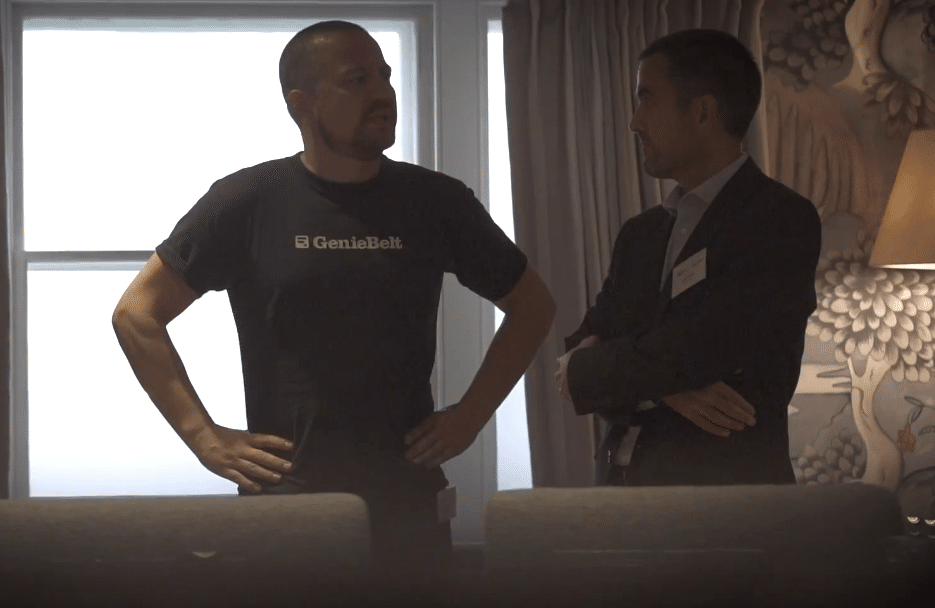Digital tools can provide housebuilders with great help in order for the latter to meet their targets. LetsBuild in collaboration with Construction News held recently in London an open discussion on the digital journey of residential construction and the ways in which we can accelerate it.
The panel consisted of senior executives from the house building industry and the general consensus was that digital solutions can help the industry overcome its current barriers.
To achieve that, Housebuilder Federations or Associations should endorse the need for digital adoption. Once housebuilders realise that they need to embrace digital change, it would be easier for the government to reach their goal of 300,000 new homes a year and the sector to address imminent problems such as low margins and the severe labour shortage.
Jason Ruddle, UK MD at LetsBuild, participated in the roundtable debate and was kind enough to share with us his impressions of the event as well as the digital future of the industry.
What are your general impressions of the event?
First of all, the location and venue contributed to an extremely successful evening of networking and thought leadership. The chairmanship by Construction News provided a professional control for some highly topical debates with all attendees contributing constructively throughout the event.
The senior representatives who attended from the house building sector were clearly passionate in the way they are achieving and managing digital adoption within their organisations and all underlined the importance for the industry to wake up and accept change is needed.
Could you run us through the key topics of the debate?
The focus for the evening was to determine the position of digital adoption within the house building sector, measure what value this brings to all parts of the project process, determine where the short falls are occurring and what needs to be done to undo the slow progress of adapting to new methods of working.
Clearly, all organisations have and continue to adopt digital tools but how many of them are being transparent through this process with the client, contractors, and subcontractors.
What are the main trends in the construction industry at the moment, based on your experience and the round-table discussion?
There’s definitely a willingness to implement change as businesses recognise that the graduates of today are so ‘tech savvy’ that using technology to manage, collaborate and deliver projects is the only way forward otherwise the industry will truly fall backwards and fail to succeed in delivering.
Unfortunately, the large national house builders take longer to implement change due to the organisational structure, number of employees it effects and also, potentially the cost so there will be a tendency to see the SME’s succeed in the first instance.

How do you see the talk about BIM?
Some would question the value of BIM in the house building sector simply due to the volume of units that are built, the variants that occur and the time it takes to coordinate the BIM models but overall, there is no doubt that there is a place for BIM somewhere in the process. House builders are not just building houses though; most of today’s leading companies will be developing high rise units that BIM coordination lends itself to so overtime, realisation of BIM value will be recognised.
Having data within a model will help the end client manage the home they eventually buy and look to update in the future but how this data is handed over is another topic discussion. With fast moving technology, are we sure that the viewing tools of today will still be available in the future and also can we gain assurance that the structure was built exactly to the data shown in the model?
Read also: The future of construction – BIM
With standardisation of objects through common environments such as BIM Objects, there are certainly step changes occurring but there is still a tendency for each house builder to try and be unique in their approach as we all still live in a competitive world so sharing common methods of build processes is still a long way from being a completely shared environment.
Though from the outside, a house looks to be similar i.e. bricks, windows, facades but underneath the skin, there are still hundreds/thousands of varying construction methods being used so you can see why BIM use in the housing industry is not widely adopted in today’s world.
Do you think that industry stakeholders have started realizing the need for a substantial change in the home building sector? What are the first steps they need to take?
Yes, absolutely. Whether we look at the volume of houses needed to accommodate the growing population or attracting the next generation of company leaders, companies have realised that change is required. The house building sector is a good barometer for the construction industry as a whole for delivering strong revenue growth and stable double-digit margins, something that is notable wrong within the contracting world of construction.
Whether we look at the volume of houses needed to accommodate the growing population or attracting the next generation of company leaders, companies have realised that change is required.
Though many people would report this stability through the volume repetition that is applied to house builders, others would disagree as it’s only the top national house builders who have the comfort of delivering thousands of new homes each year, there are still thousands of registered house builders/developers who are successful in their own rights.
What can LetsBuild do in order to support this paradigm shift?
There are many new tech startups who have something to offer to the construction sector, but LetsBuild’s approach with open transparency and accountability and delivery in key territories with industry led experts seems to be hitting the right notes in many organisations.

With our simple but bold approach to the leading problems in collaboration, GenieBelt is gaining respect in the way construction companies need to use digital tools in today’s world of business. We are very open in the approach to product integrations as every business will have their preferred applications so if we can help deliver a common way of connecting these applications that in turn will deliver a common approach to collaboration and data gathering then it’s a win-win all round.
Jason Ruddle is UK Managing Director at LetsBuild and has more than 25 years of experience in delivering key software solutions to the construction industry.




